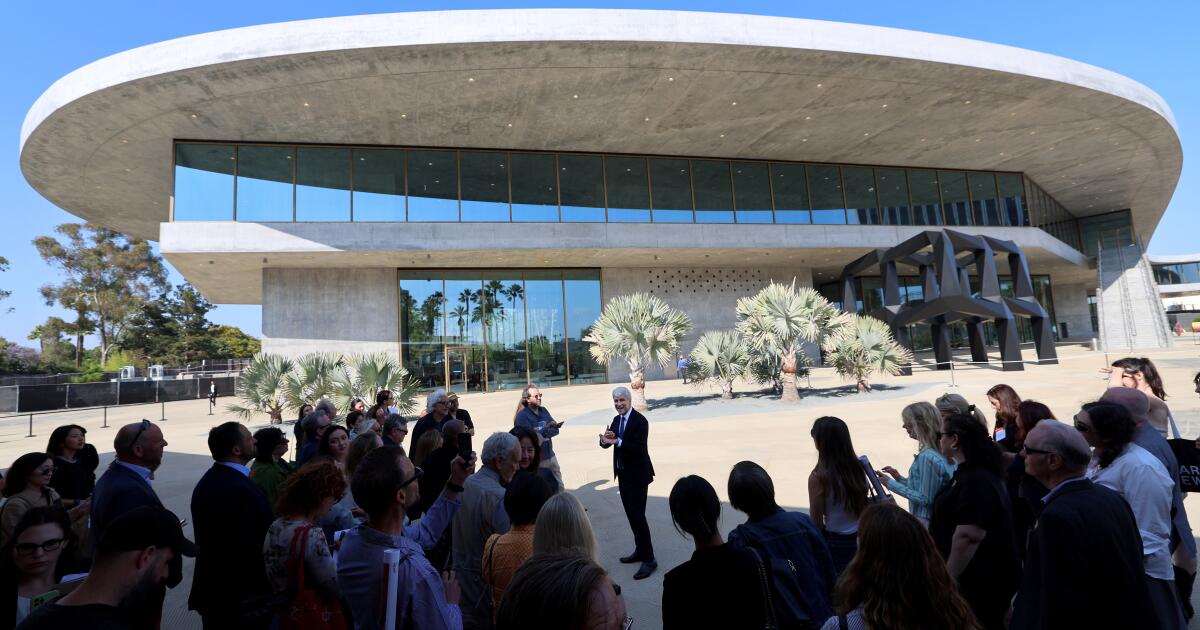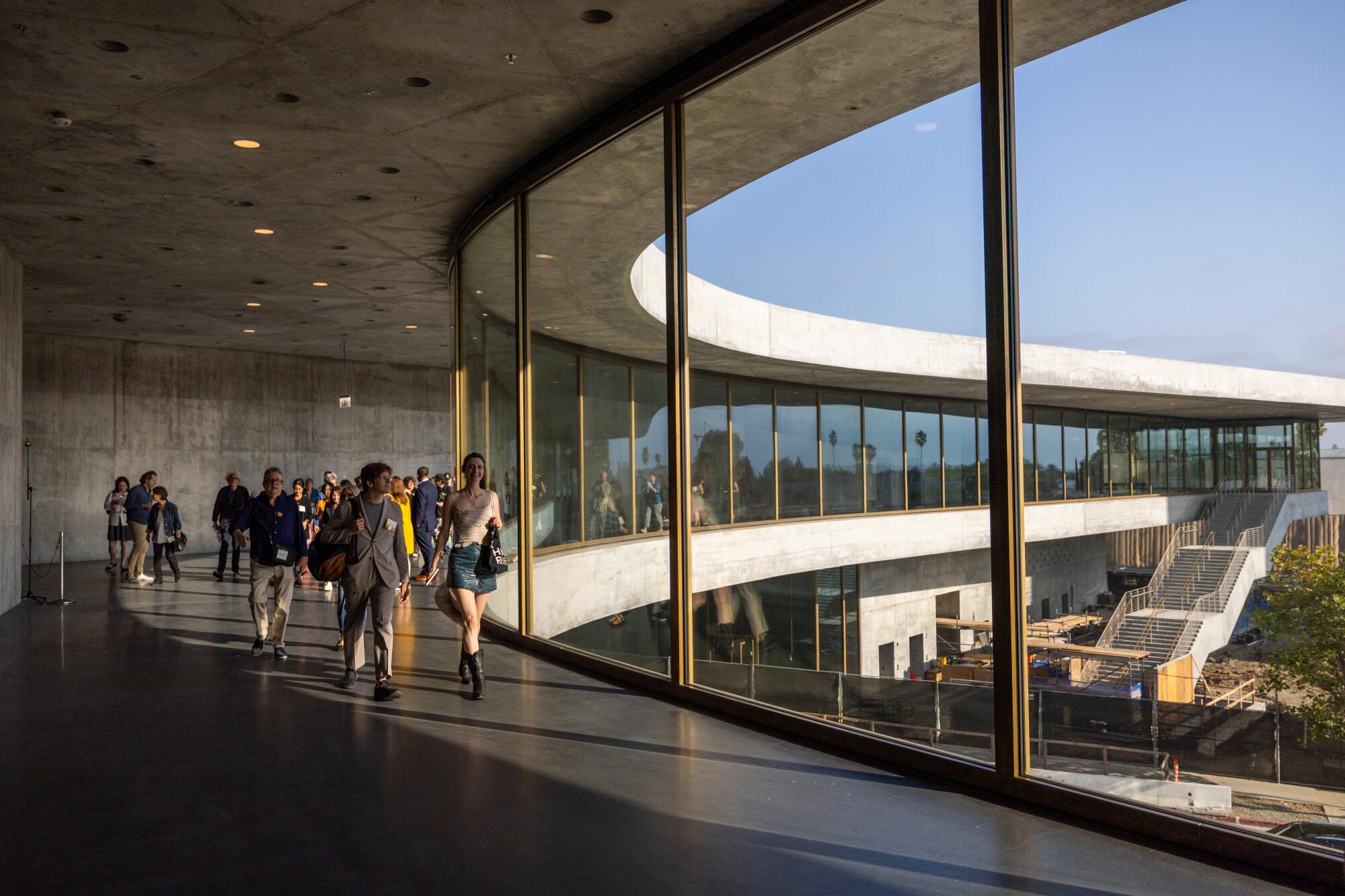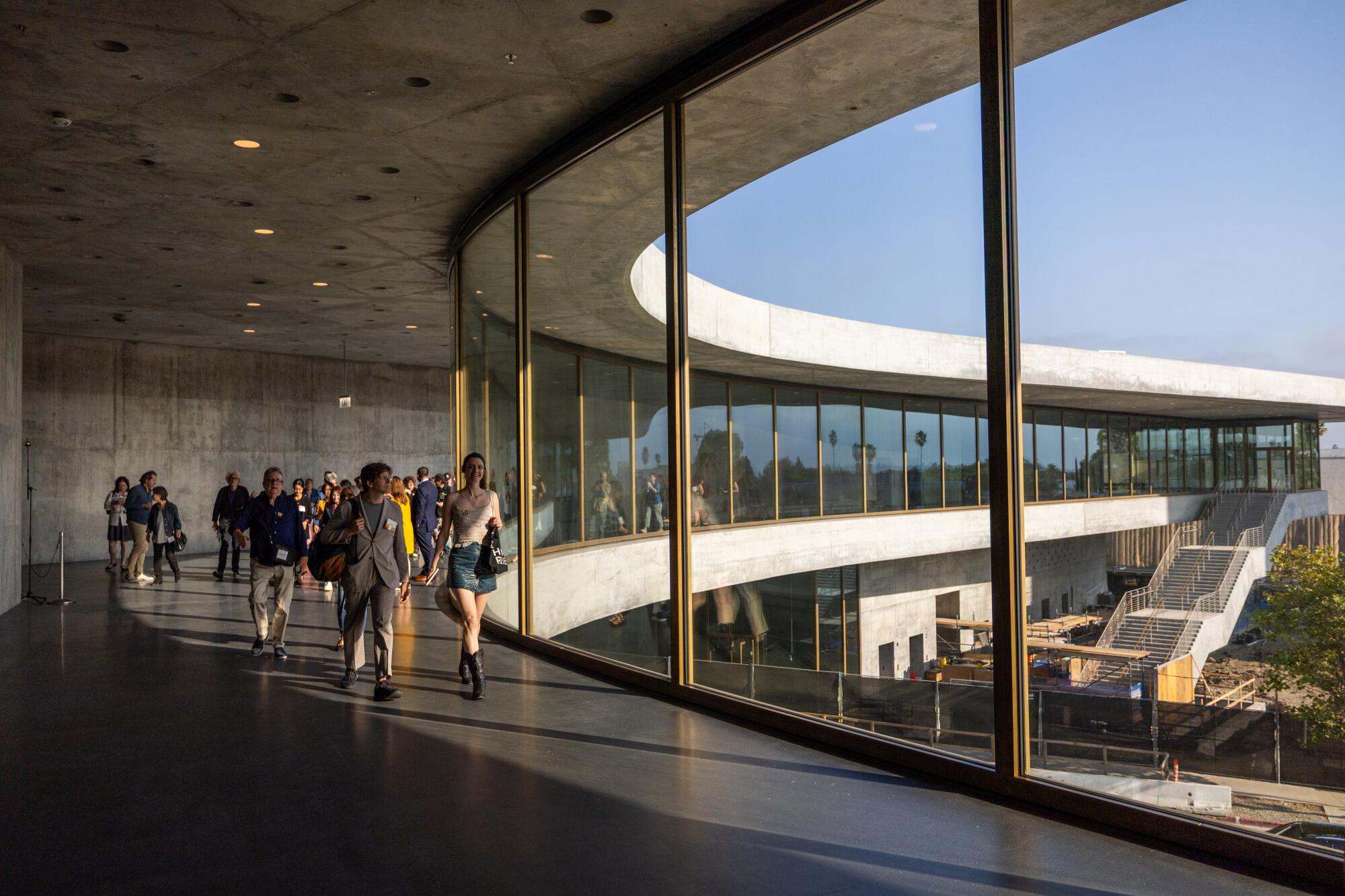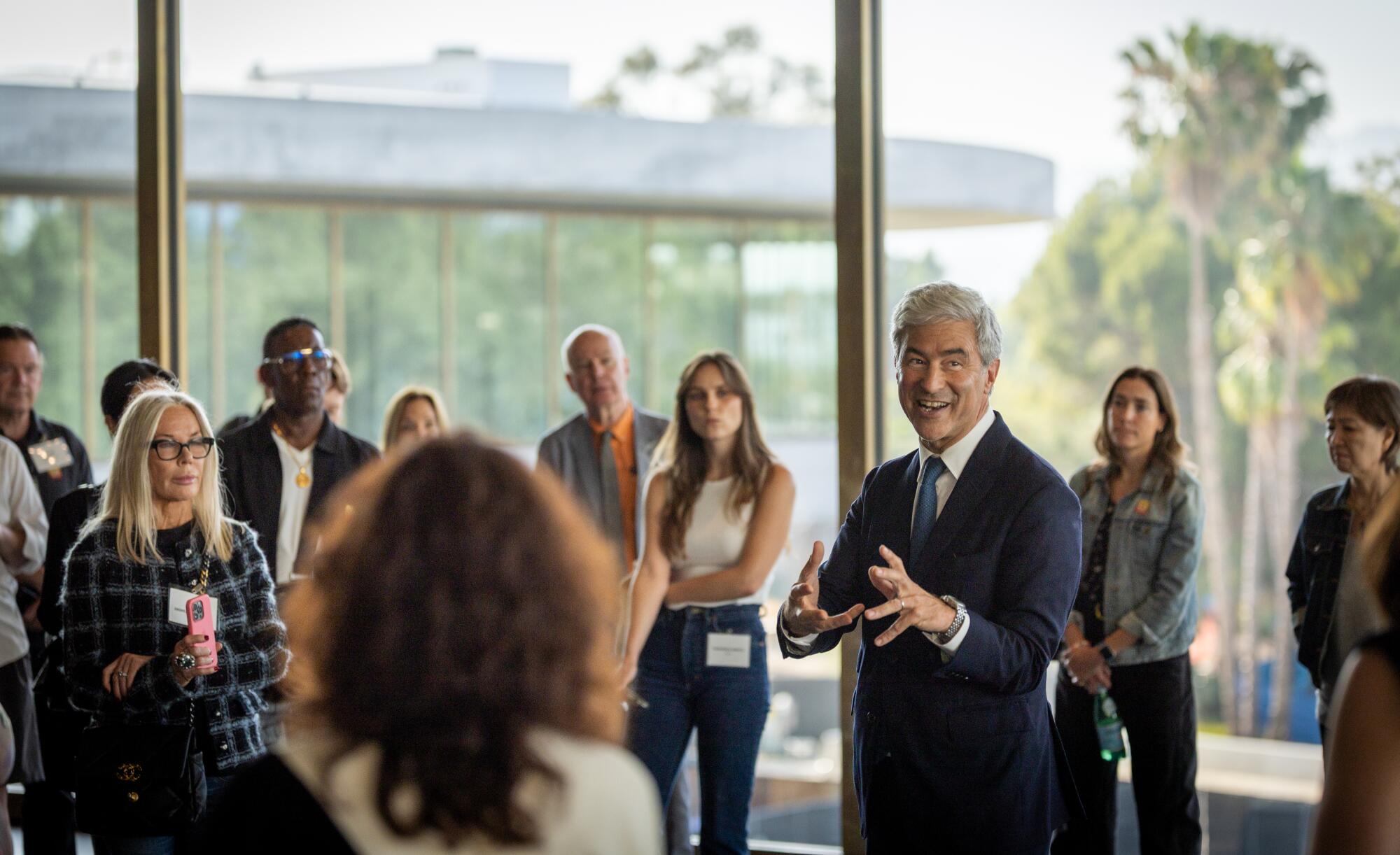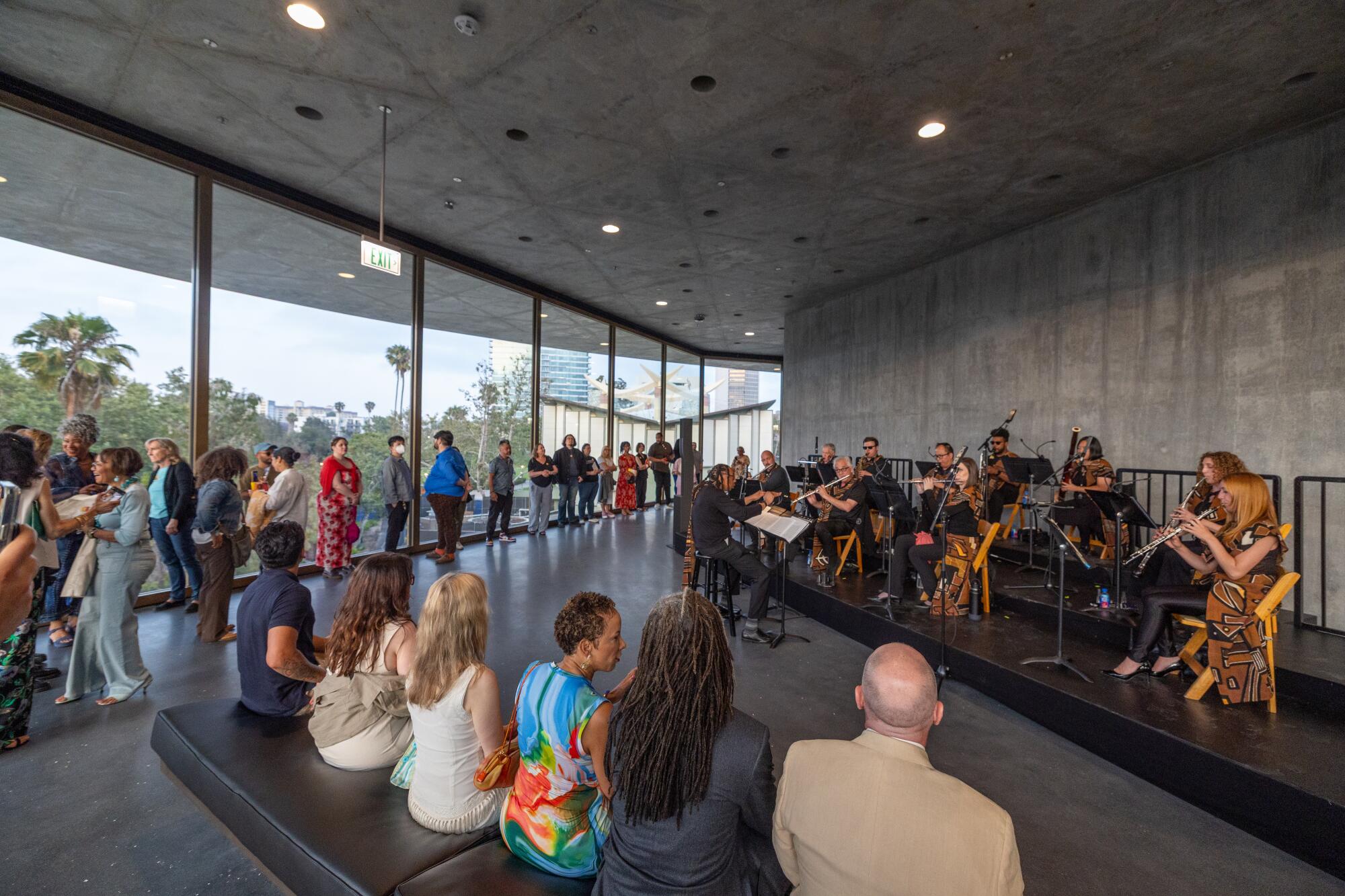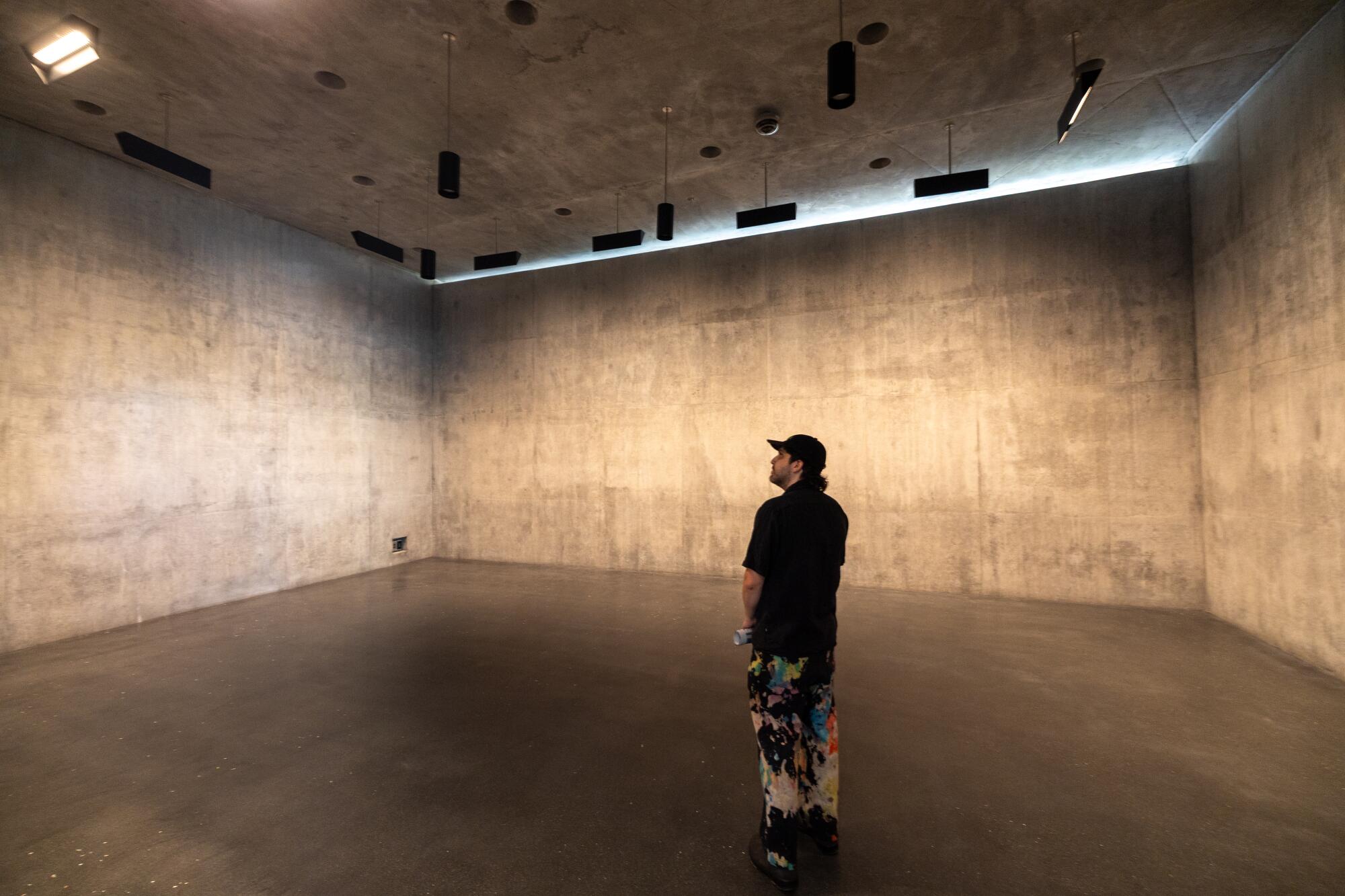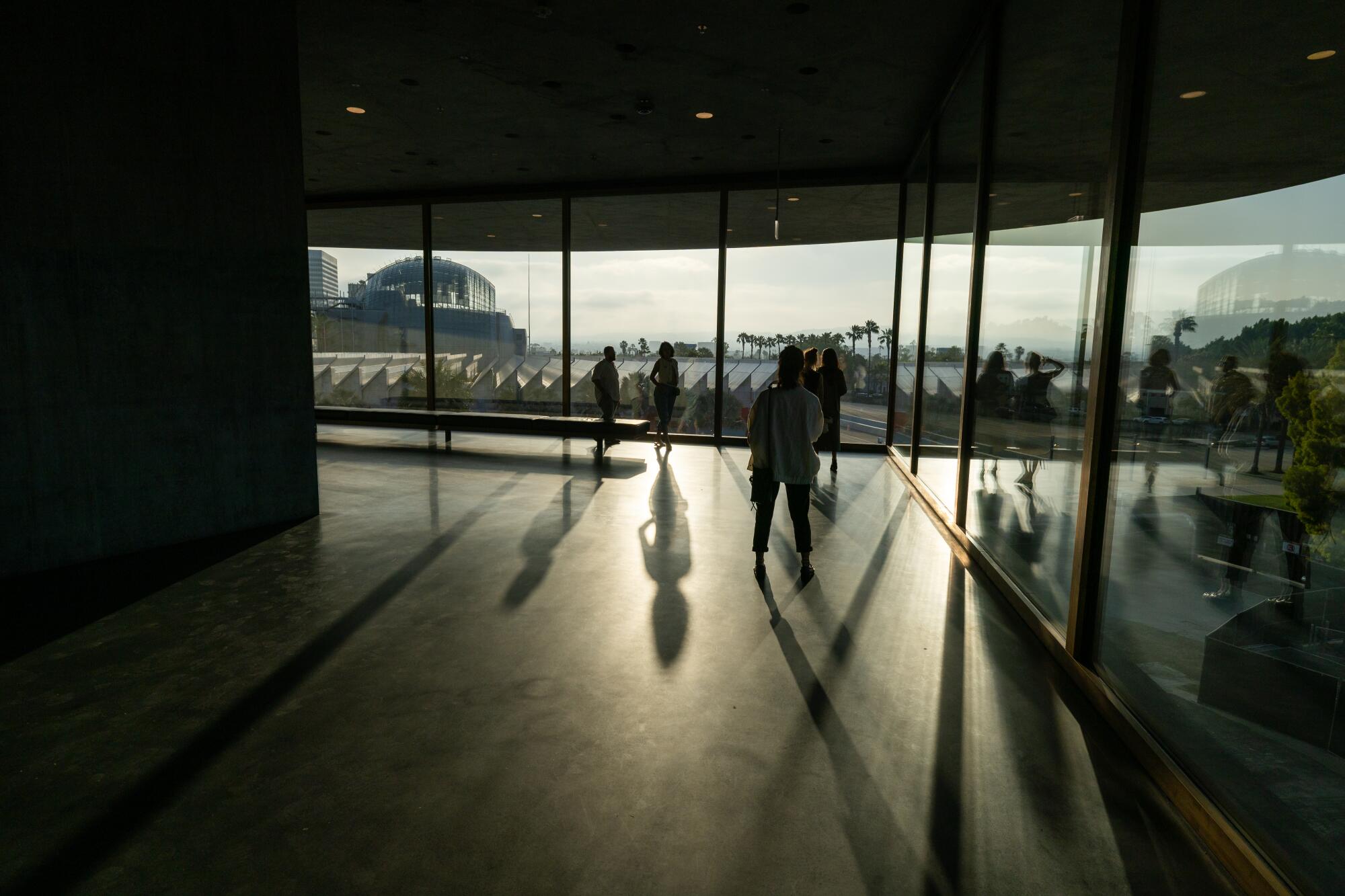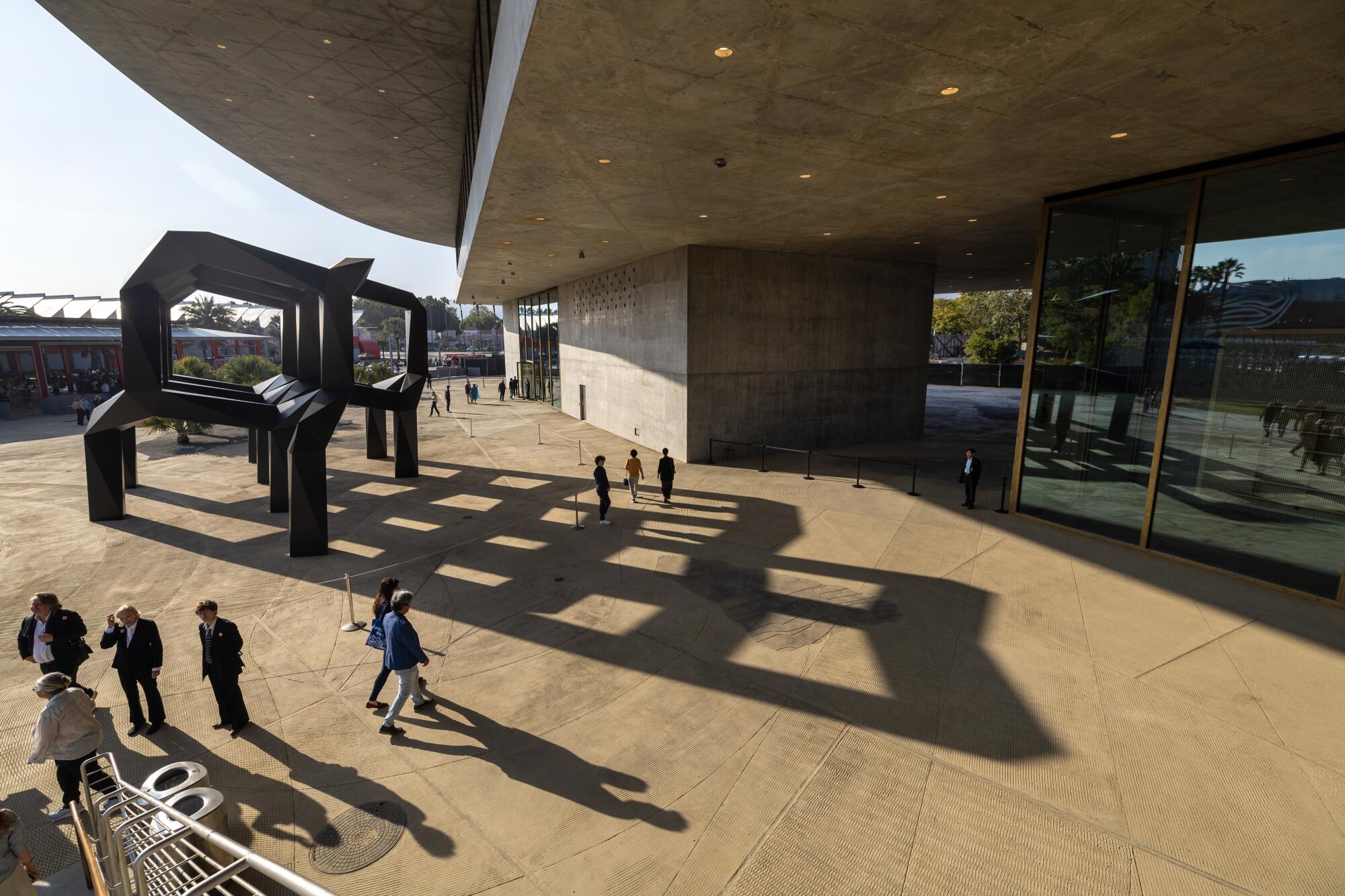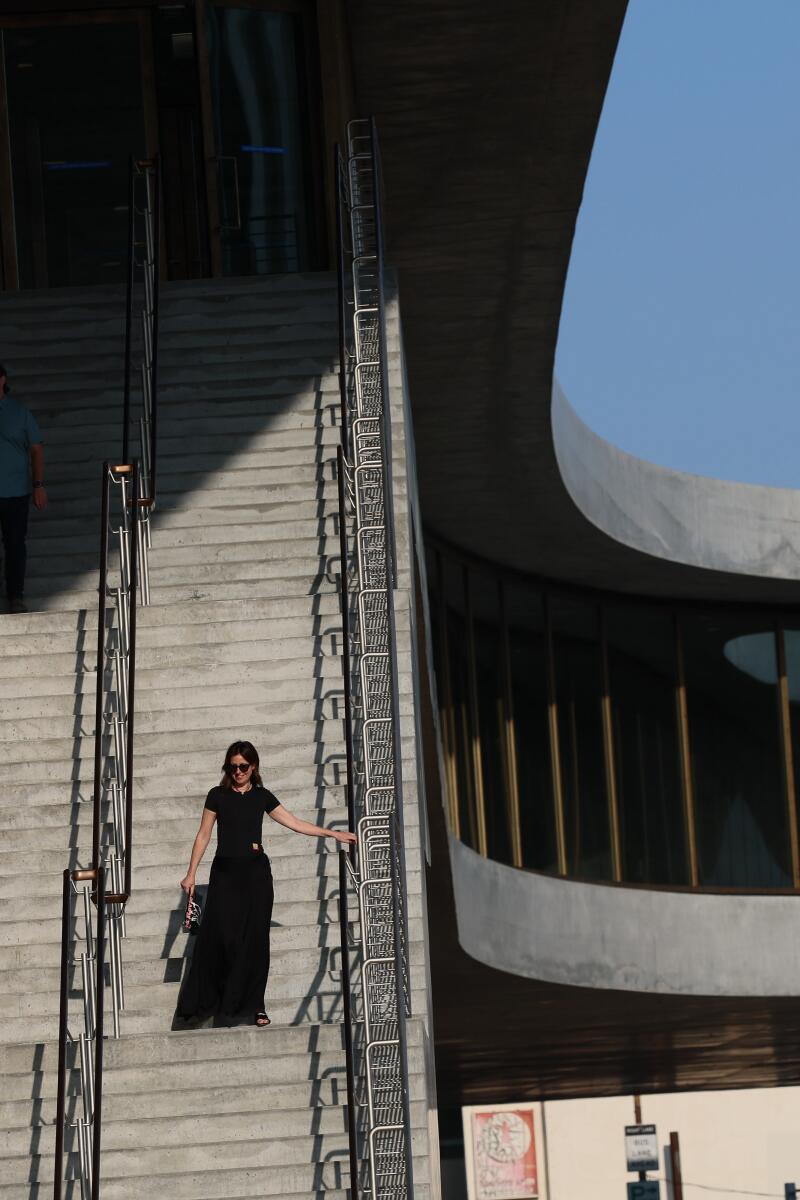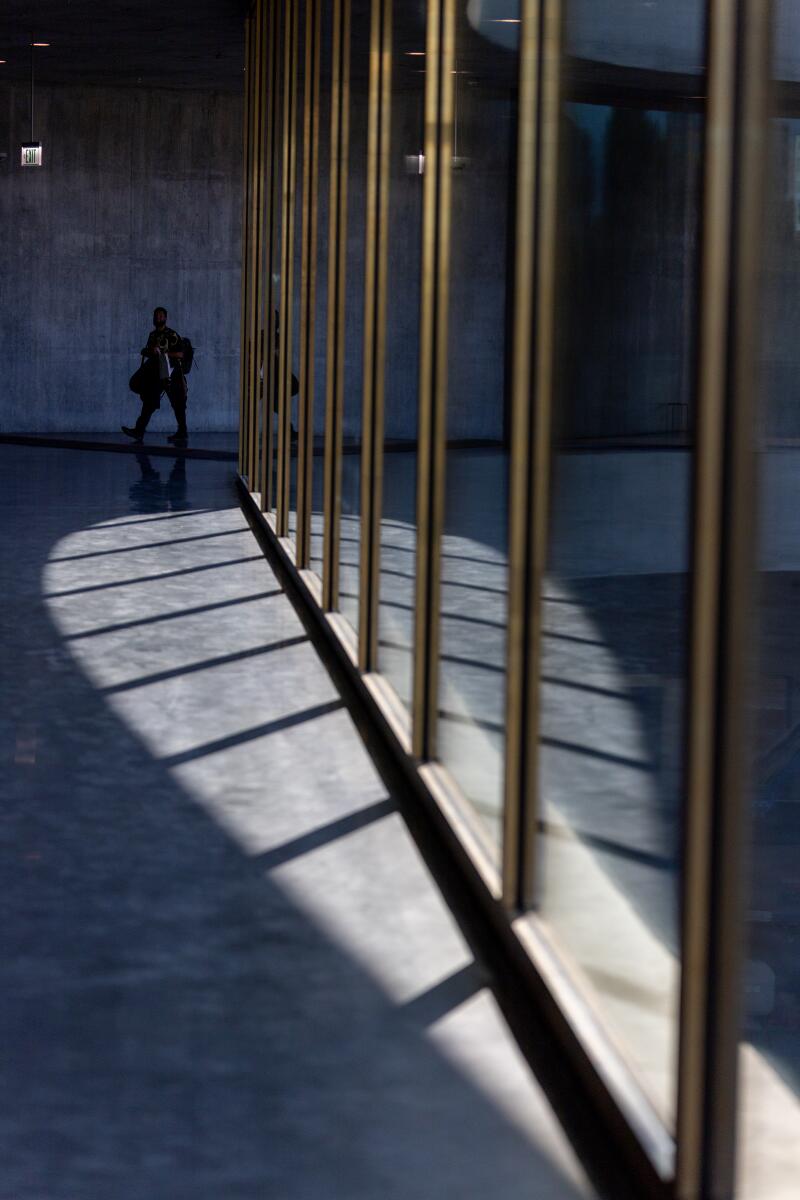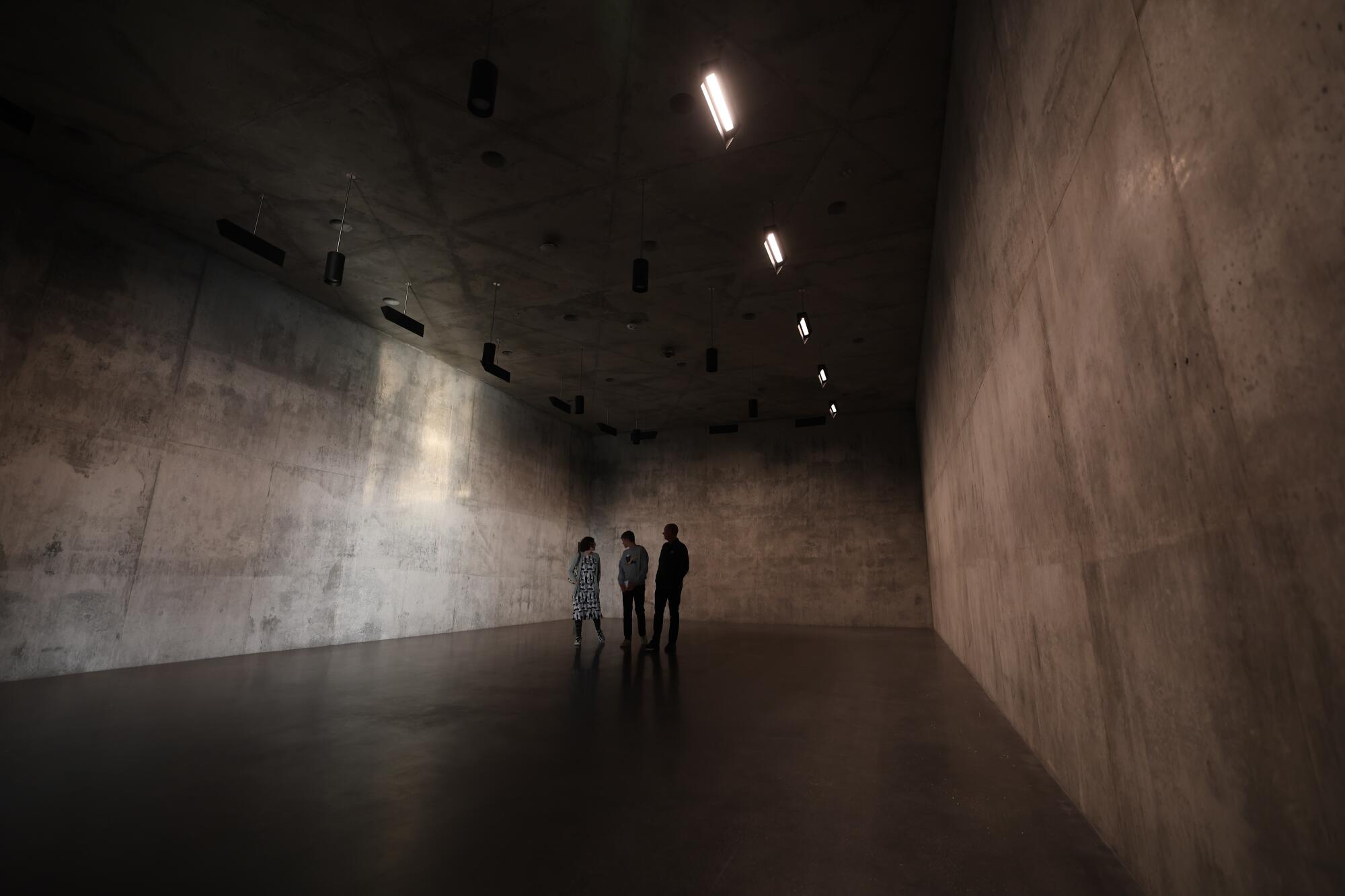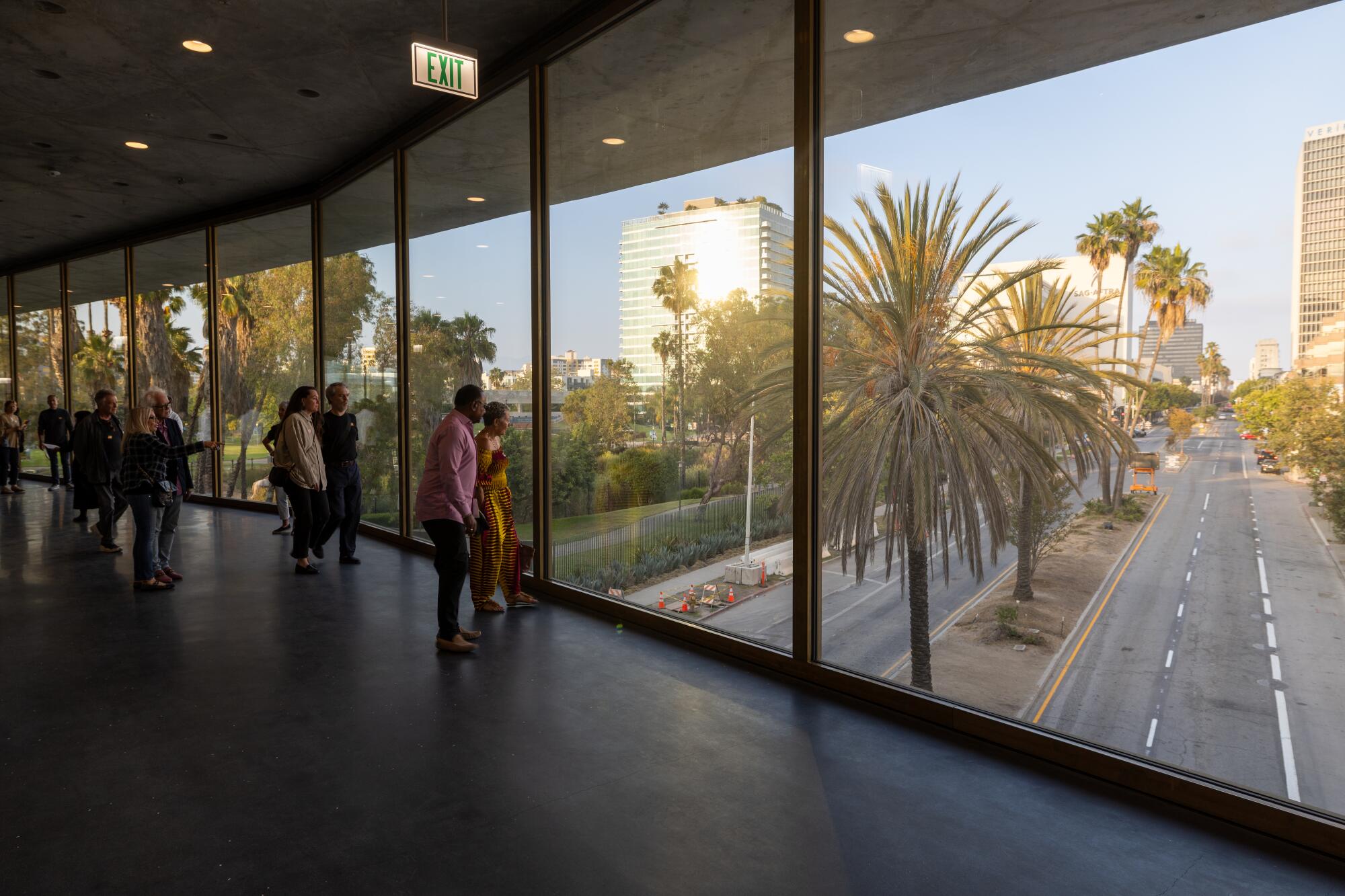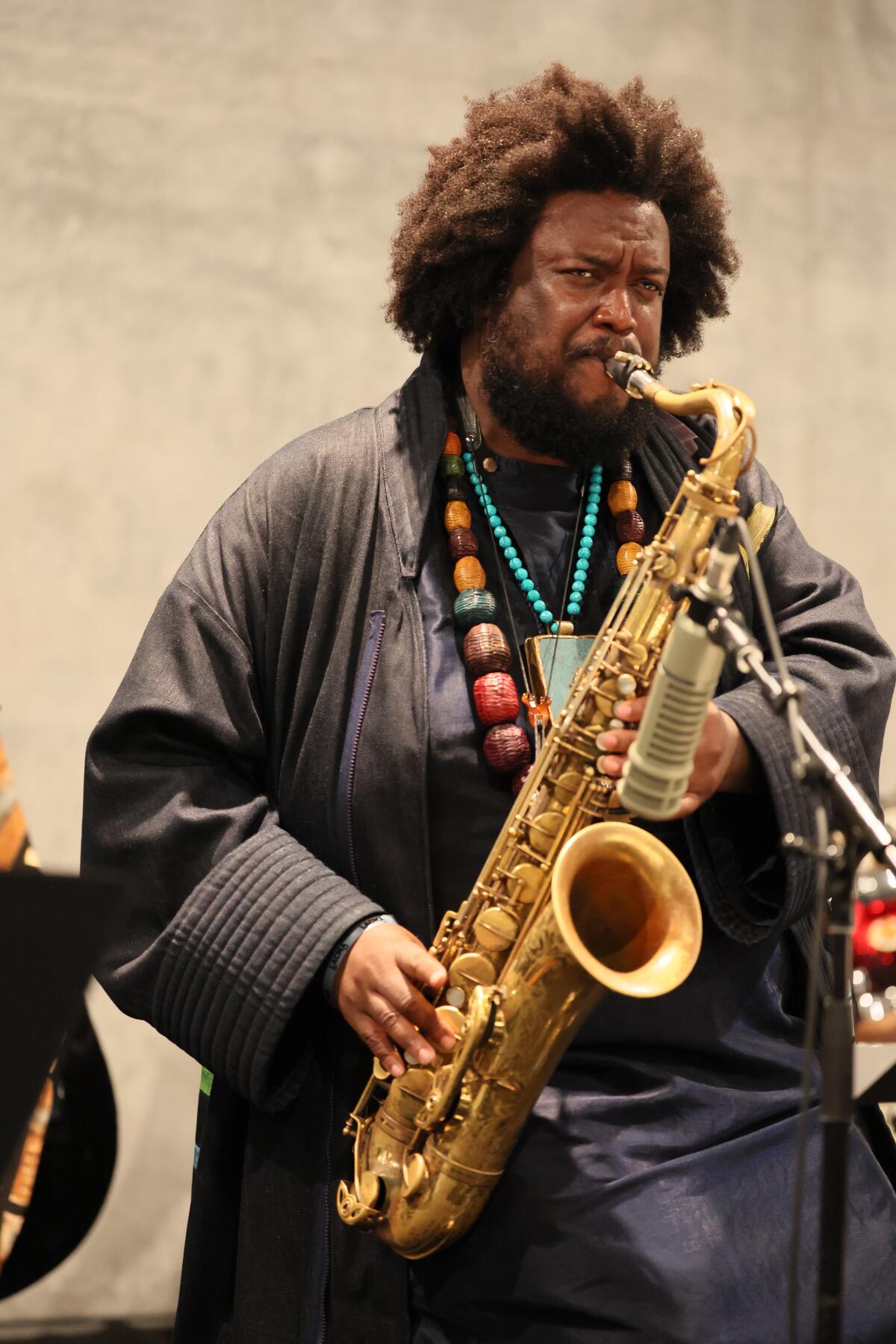LACMA won’t voluntarily recognize union as workers claim burnout
Los Angeles County Museum of Art management on Wednesday declined to voluntarily recognize the union its employees announced they were forming last week. This means LACMA United cannot move forward with collective bargaining efforts until it is formalized by a National Labor Relations Board election. Complicating matters further, NLRB activities — including elections — are on hold amid the federal government shutdown.
The disconnect between staff — a clear majority of whom signed union authorization cards — and management comes at a significant moment in the museum’s history as LACMA works tirelessly to open its $720-million David Geffen Galleries. The new home for its encyclopedic permanent collection, designed by Pritzker Prize-winning architect Peter Zumthor, contains 110,000 square feet of gallery space and is scheduled to open to the public in April after more than a decade of planning, fundraising and building.
In a news release, the union noted that organizing efforts — in the works for more than two years — have taken on added urgency as workloads have increased in the face of opening the new building.
“Staff across departments — many performing demanding physical labor — are stretched thin as deadlines accelerate,” LACMA United wrote. “Without adequate protections, this pace is unsustainable and has already contributed to burnout and turnover among dedicated employees who deserve better from an institution they’ve helped build.”
The union’s organizing committee added in a statement, “We are disappointed that LACMA leadership has chosen to delay rather than embrace the democratic will of its workers. While the museum reimagines itself as a more collaborative, less hierarchical institution in its new David Geffen Galleries, it has declined to extend that same vision to its relationship with the very people who bring LACMA’s mission to life every day.”
“LACMA’s leadership has great respect for our team and for everyone’s right to make their own choice on this important issue,” Michael Govan, the museum’s director and chief executive, said in an email. “No matter the outcome, my commitment to our employees — to listen, to support them, and to continue building a strong and respectful workplace — remains unchanged.”
Management’s decision stands counter to those made by other cultural institutions across the city, including the Museum of Contemporary Art, the Academy Museum and the Natural History Museum, all of which voluntarily recognized their unions over the last six years.
LACMA United represents more than 300 workers from across all departments, including curators, educators, art installers, conservators, registrars, visitor services staff, facilities workers, researchers and designers. The union is asking for improved wages, benefits and working conditions in what has proved to be a challenging climate for museum workers across the county.
The union did not demonstrate at last week’s celebrity-packed LACMA Art + Film Gala, which was co-hosted by Leonardo DiCaprio and fashion designer Eva Chow, and raised more than $6.5 million in support of the museum and its programs.
